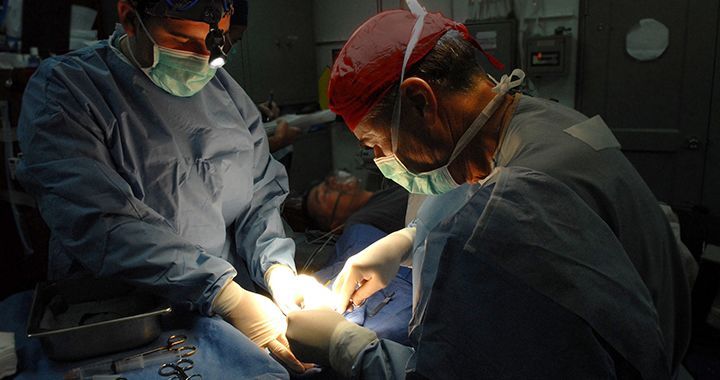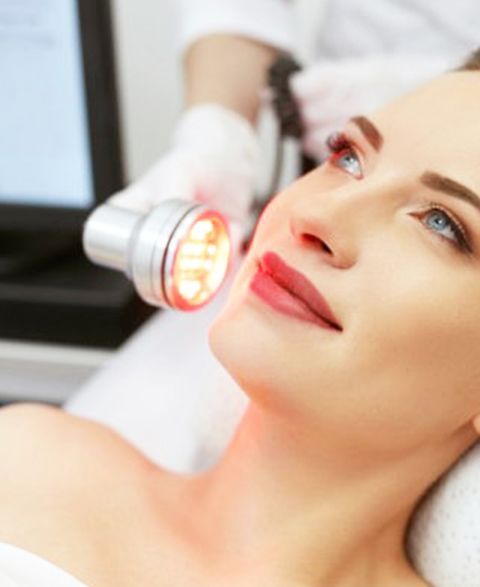Medical Lighting / LED Light Therapy
Lighting is all about healing.

Lighting is all about healing.

The application of light sources in the medical field can be roughly divided into the following categories:
Normally, fluorescent lamps, grille lamps, ceiling lamps, spotlights and downlights are commonly used.
It is mainly used for detecting and observing the lesions. It is also a transmissive, small-angle, directional lighting fixture, such as laryngoscope lamps, dental lamps, etc.
Surgical lighting can be classified into two types, fixed and mobile. Presently, the mainstream is xenon lamps and LED shadowless lamps, which are costly.
The use of ultraviolet light to sterilize medical equipment and medical utensils. It has the advantages of high speed and high efficiency.
Light therapy, or phototherapy is the use of photobiological effects to achieve the purpose of treatment by stimulating or inhibiting the growth of human skin or certain tissue cells with specific wavelengths of light.
Among these medical applications, LED lights are suitable for medical fields including sterilization, biochemical instruments, light therapy instruments; medical endoscopes, surgical shadowless lights, surgical microscopes, etc.

There are numerous benefits in using LEDs for medical illumination applications, including longer life, less heat, dynamic control, lower energy consumption and lower cost. LED technology has improved significantly over the years, and is currently being integrated into medical devices, including room illumination, surgical lighting, exam lights, light therapy and endoscopy.
In every medical procedure, a high color rendering index (CRI) and a glare-free light field are crucial for staff to administrative care. Lighting in a patient’s room must be multi-functional in assisting doctors and staffs that are catering to patients, as well as, creating an atmosphere in a hospital environment that is comforting and contributes towards the healing process. In public areas such as hospital corridors, stairways and lounges, lighting should be bright enough for people to see clearly and comfortably.
One essential advantage of using LEDs in medical lighting is LEDs are a cold light source. Most environments in medical care require the use of cold light sources, such as operating rooms and special treatment rooms. The reason is because the use of a hot light source is a hazard if the lamp should overheat. Therefore, medical lamps prefer cold light sources like LED lights.
In the 1990’s visible lights were used by NASA as grow lights for plants in space. The LED light used in these devices were ten times brighter than the sun. Therefore, they sped up plant cell production and the photosynthesis process.
Red LED lights were tested on human skin in the late 1990’s, and it was discovered that red light helps human skin cells grow faster too. This discovery has led to red LED light usage in treatment for skin damage, acne, irritated rosacea-plagued skin, psoriasis, age spots, wrinkles and skin cancer, or melanoma.
LED Light Therapy is a safe and all-natural, non-invasive process that encourages your body to produce enzymes, elastin fibers, and collagen that support the skin’s structure, producing younger, smoother, firmer-feeling skin. It repairs damaged skin, kills bacteria to fight acne, reduces pore size, dramatically reduces fine lines and wrinkles, relieves joint pain, reduces scars and stretch marks, evens out pigmentation, and much more.
Soothe chronic painSlow the visible effects of agingReduce fine lines and wrinklesSpeed up wound healingImprove acneImprove sleep cycleEncourage hair growth


This is a powerful antibacterial properties for the treatment of acne without irritation, reduces oil production, prevents future breakout and offers a UV-free alternative for the treatment of eczema and psoriasis.
This increases natural hydration levels, reduced redness and inflammation, shrinks the appearance of pores, regulates oil production, improves circulation, accelerates skin repair as is a medically-approved treatment for rosacea.
This is the most deeply absorbed wavelength, it increases cell permeability and absorption, smooths lines and wrinkles, improves elasticity, reduces pain and inflammation, accelerates wound healing and heals cystic acne.
YUJILEDS safely provide higher output, as much as 10 times the power of regular LEDs in the forms of SMD and COB. This helps doctors as well as electronic medical devices easily capture the correct images.
YUJILEDS provide BC series (CRI≥95) and VTC series (CRI≥98) LEDs with R9≥90 for medical applications. A high CRI is basis for true color rendition during medical observation, examination, surgery and therapy. Such high CRI light would be a perfect source for general illuminating in medical centers. R9 indicates the color quality of red in artificial lights and red is the major color index of flesh, and blood. This is also important for image post-production and analysis by medical devices.
Usually people use more than one light in medical occasion, then it will be considerable that how far the lighting chroma is away from our target, and how about the matching degree and consistency on the multiple lights we are using. YUJILEDS provide LED emitters with highest chroma accuracy and consistency in the industry.
YUJILEDS offers a broad range of custom LED spectrum designs through its extensive R&D abilities and phosphor expertise. With over 92 different phosphors covering 450nm – 730nm range, and sourcing LED chips from 365nm to 950nm, YUJILEDS brings full capability to customize the most preferable spectrum for customers. YUJILEDS provides full spectrum series LED with its 405nm and 450nm emitting recipes, and it is also possible to customize a certain ratio between designated colors to match the medical target.
Copyright © 2025 Beijing Yuji International Co., Ltd.